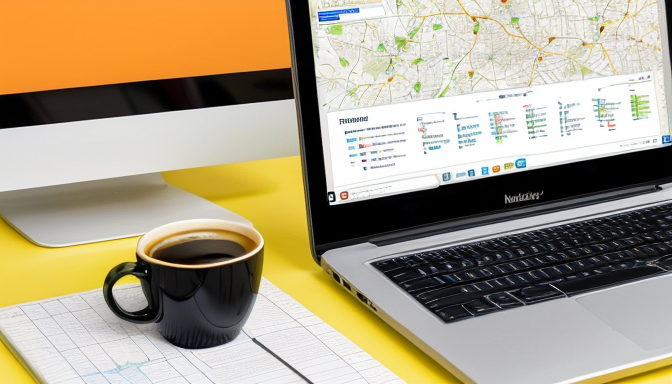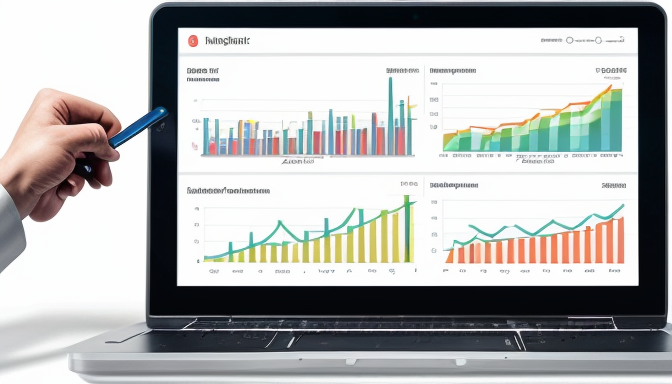
When it comes to boosting your local business, a well-crafted Maps SEO strategy is your best friend. Think of it as your secret weapon. It helps you stand out in a crowded marketplace. But what does it really take to build a solid Maps SEO strategy? Let’s dive into the essentials.
First off, you need to understand the landscape. What are local keywords? These are the phrases your potential customers are typing into their search bars. Imagine someone searching for “best pizza near me.” If you’re a local pizzeria, you want to be the answer to that question. So, start by researching keywords that are relevant to your business. Tools like Google Keyword Planner can be incredibly helpful.
Next, let’s talk about your Google My Business (GMB) listing. This is a crucial part of your Maps SEO strategy. It’s like your business card online. Make sure to fill out every section. Include your address, phone number, and business hours. But don’t stop there! Add photos and a compelling description. This not only attracts customers but also tells Google that your business is legitimate. The more complete your GMB profile, the better your chances of showing up in local searches.
Another important aspect is NAP consistency. NAP stands for Name, Address, and Phone number. It’s vital to keep this information the same across all platforms—your website, social media, and online directories. Inconsistent information can confuse both customers and search engines. Imagine calling a restaurant only to find out they’ve moved. Frustrating, right? Keep it simple and consistent.
Now, let’s not forget about reviews. Customer feedback is gold. Positive reviews can significantly enhance your visibility. Encourage happy customers to leave reviews on your GMB listing. Respond to all reviews, whether they’re good or bad. This shows that you care about your customers and their experiences. Plus, it can improve your ranking in local search results!
Finally, consider local backlinks. These are links from other local businesses or websites that point to your site. They’re like a vote of confidence. The more local backlinks you have, the more credible your business appears to search engines. Reach out to local bloggers or partner with other businesses for mutual promotion. It’s a win-win!
In summary, building a successful Maps SEO strategy isn’t just about ticking boxes. It’s about creating a vibrant online presence that resonates with your local audience. By understanding local keywords, optimizing your GMB listing, ensuring NAP consistency, gathering reviews, and utilizing local backlinks, you can significantly enhance your visibility. So, are you ready to take your local business to the next level?

Develop Robust Maps SEO Strategy
Creating a strong foundation for your Maps SEO strategy is like building a sturdy house. You need the right materials and a solid plan. First, you must understand local keywords. These are the words your potential customers are typing into search engines. Think about what they might say when looking for your services. Are they searching for “best pizza near me” or “affordable plumbing in [Your City]”? Identifying these keywords is crucial. They will guide your content and help you connect with your audience.
Next up is optimizing your Google My Business listing. This step is vital for any Maps SEO strategy. Your listing is often the first thing people see. Make sure it’s complete and accurate. Include your business hours, website, and a brief description. Use those local keywords naturally. It’s like giving your business a friendly face to greet potential customers. Don’t forget to add high-quality images. They can attract more clicks and help your listing stand out.
Consistency is key in your Maps SEO strategy. Ensure your NAP (Name, Address, Phone) information is the same across all platforms. This includes your website, social media, and online directories. Inconsistent information can confuse search engines and users alike. Imagine trying to find a restaurant, but every site has a different address. Frustrating, right? Keeping your NAP consistent builds trust with both search engines and customers.
Moreover, consider leveraging local backlinks. These are links from other local businesses or websites that point to yours. They can boost your credibility and improve your local search rankings. Think of it as a vote of confidence from your community. The more local businesses that link to you, the more relevant you appear in search results.
In summary, developing a robust Maps SEO strategy involves:
- Understanding local keywords
- Optimizing your Google My Business listing
- Maintaining consistent NAP information
- Building local backlinks
By focusing on these areas, you lay a solid groundwork for your Maps SEO strategy. It’s not just about visibility; it’s about connecting with your community. Remember, your goal is to be the go-to choice when someone searches for services in your area. With a strong foundation, you can build your business’s presence and drive more traffic.

Execute Maps SEO Strategy Effectively
When it comes to executing your Maps SEO strategy, every detail counts. Think of it like preparing a dish; if you skip a step or use poor ingredients, the final product won’t taste right. First, you need to focus on optimizing your content for local searches. This means weaving in those important local keywords that people are using to find businesses like yours. Imagine someone typing “best pizza near me” into their phone. Your goal is to make sure your business pops up right at the top. How do you do that? By understanding what your customers are searching for and incorporating those terms into your website, blog posts, and social media content.
Next up, gather customer reviews. These are like gold stars for your business. Not only do they build trust, but they also help your Maps SEO strategy. When potential customers see positive feedback, they’re more likely to choose you over a competitor. Encourage your happy customers to leave reviews on your Google My Business listing. You can even make it easier for them by sending a follow-up email after their visit, thanking them and providing a direct link to your review page. It’s a simple nudge that can lead to big results.
But that’s not all. You also need to think about local backlinks. These are links from other local businesses or websites that point back to yours. They act like a vote of confidence in your business. The more local backlinks you have, the better your visibility will be in search results. To build these links, consider partnering with local organizations or sponsoring community events. This not only boosts your Maps SEO strategy but also strengthens your ties to the community.
Now, let’s talk about consistency. Your Name, Address, and Phone number (NAP) should be the same across all platforms. This includes your website, social media, and any online directories. If your information is inconsistent, it can confuse both customers and search engines. Imagine trying to find a restaurant with different addresses listed everywhere. Frustrating, right? Keep it clean and consistent to enhance your local search presence.
In summary, executing your Maps SEO strategy effectively requires a mix of local keyword optimization, gathering reviews, building local backlinks, and maintaining consistent NAP information. Each piece plays a vital role in helping your business stand out in local searches. By focusing on these elements, you’re not just improving your search visibility; you’re also creating a better experience for your customers. And that’s what it’s all about, isn’t it?

Evaluate Maps SEO Strategy Results
Evaluating your Maps SEO Strategy results is like checking the pulse of your business. How do you know if your efforts are paying off? It’s all about tracking performance and making adjustments along the way. First, you need to identify the key metrics that matter most to your local visibility. This includes looking at your website traffic, search rankings, and customer engagement. Are people finding you? Are they clicking through? These questions are crucial.
To get a clearer picture, consider using tools like Google Analytics and Google Search Console. These platforms can provide insights into how users interact with your site. For instance, you might discover that certain keywords are driving traffic, while others are not. This information is gold! It helps you refine your Maps SEO Strategy and focus on what works.
Another important aspect is to analyze user engagement. How are visitors behaving once they land on your site? Are they sticking around or bouncing quickly? High bounce rates could indicate that your content isn’t resonating with them. You might need to tweak your messaging or improve your website’s user experience. After all, first impressions matter!
Don’t forget the power of customer reviews. They not only improve your reputation but also impact your local search rankings. Encourage your satisfied customers to leave positive feedback. Monitor these reviews regularly. Respond to them, whether they are good or bad. This shows potential customers that you care. Plus, it can provide you with valuable insights into what you’re doing right and where you can improve.
Once you have gathered all this data, it’s time to make data-driven adjustments. This could mean optimizing your content further, updating your Google My Business listing, or even re-evaluating your local keyword strategy. Remember, your Maps SEO Strategy is not a set-it-and-forget-it deal. It requires ongoing attention and tweaks to stay relevant.
In summary, evaluating your Maps SEO Strategy results is essential for driving local traffic and enhancing your online presence. By tracking key metrics, analyzing user engagement, and making informed adjustments, you can ensure that your strategy remains effective. It’s a cycle of continuous improvement that can lead to greater visibility and success.
Frequently Asked Questions
- What is Maps SEO?
Maps SEO is all about optimizing your online presence to enhance visibility in local search results, especially on platforms like Google Maps. It’s like giving your business a spotlight that shines bright in your local community!
- Why is a Google My Business listing important?
Your Google My Business listing is your digital storefront. It helps potential customers find you, understand what you offer, and even get directions to your location. Think of it as your business card, but way more powerful!
- How do I choose the right local keywords?
Choosing local keywords is like picking the right bait for fishing. You want to find terms that your customers are searching for in your area. Tools like Google Keyword Planner can help you discover popular local search terms.
- What role do customer reviews play in Maps SEO?
Customer reviews are like word-of-mouth referrals in the digital world. They not only build trust with potential customers but also signal to search engines that your business is reputable, boosting your visibility in search results.
- How often should I update my Maps SEO strategy?
Just like you wouldn’t ignore a garden, your Maps SEO strategy needs regular care and attention. Aim to evaluate and update your strategy at least quarterly to adapt to changing trends and customer behaviors.
- Can I do Maps SEO on my own?
Absolutely! With some research and effort, you can implement a solid Maps SEO strategy. However, if you feel overwhelmed, hiring an expert might be beneficial, especially for more complex needs.



